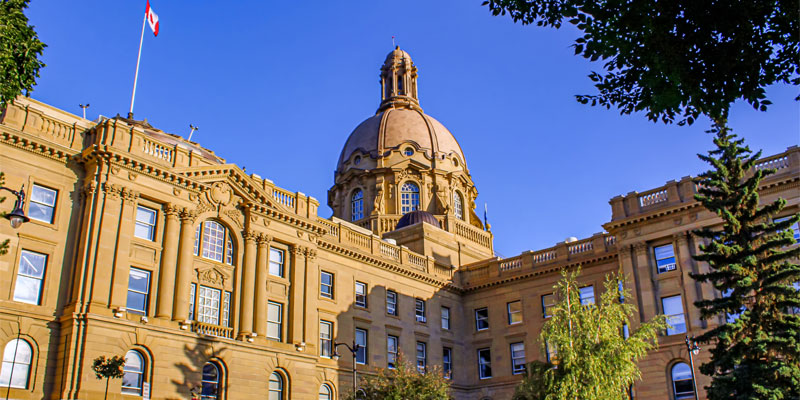Kenney can’t become complacent about Alberta’s government debt

The COVID recession and recent drop in oil prices, which contributed to a historic $21.3 billion projected provincial budget deficit (for 2020/21), sent the Kenney government’s plan to balance Alberta’s budget into a tailspin. But that doesn’t mean it should give up on repairing Alberta’s finances. In its upcoming budget, the government needs a new fiscal plan to move towards budget balance as this crisis passes.
The province’s finances are clearly in trouble. Alberta lost its “debt-free” status in 2016/17 and net debt (total debt minus financial assets) has quickly climbed each year. Add in a few unprecedented developments, including a global pandemic and low oil prices, and net debt will reach a projected $63.5 billion (2020/21)—that’s roughly $14,300 of government debt per Albertan.
In its first budget, the Kenney government presented a plan to balance the operating budget by 2022/23 and finally stop the rapid accumulation of debt. To achieve this, Budget 2019 proposed to reduce nominal program spending (all spending excluding interest costs) by a total of 1.6 per cent over four years. This represented a meaningful change from the spending trajectory of previous governments in Edmonton, which routinely increased program spending year over year, despite stubborn deficits.
In its second budget—with some additional projected revenue--the Kenney government revised the total reduction in nominal program spending to 0.8 per cent over the same period. Still, it remained committed to budget balance by 2022/23.
Notably, the spending reductions proposed in both Budget 2019 and Budget 2020 were still relatively mild compared to former reform periods across Canada.
Of course, circumstances have changed. The COVID recession has resulted in increased spending and reduced revenue (including a sharp decline in resource revenues). Correspondingly, the deficit—that is, the amount of government spending in excess of government revenues this year—jumped from a projected $6.8 billion to a projected $21.3 billion (2020/21).
But again, this does not mean the government should give up on its balanced budget plan. In fact, now more than ever, it’s important the Kenney government begin to repair Alberta’s finances as the pandemic passes.
So what should Alberta’s next budget, to be tabled later this month, look like?
To get back on track to balance the books, the budget will require economically-harmful tax increases on Albertans (which could further slow economic growth, at least at the margin), an unlikely feat amid the economic pain of this year, or find further spending reductions to be implemented in the next few years. The only other option is to push back any plan to move towards a balanced budget and continue to rapidly accumulate debt.
If the Kenney government does not present a plan to slow its debt accumulation, Albertans today and in the future will pay the price via government debt interest payments, which leave less money available for priorities such as health care, education and pro-growth tax relief.
The Kenney government promised to repair Alberta’s finances, and it presented a plan to move towards a balanced budget in each of its last budgets. Despite this year’s unprecedented circumstances, it should continue that trend.
Author:
Subscribe to the Fraser Institute
Get the latest news from the Fraser Institute on the latest research studies, news and events.

